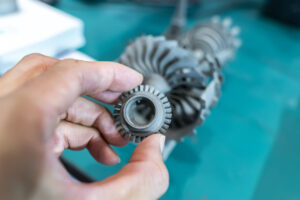What is FDM 3D Printing?

There are many kinds of 3D printing technologies. Fused deposition modeling (FDM) is probably the most widely used type of 3D printing process. That’s because FDM 3D printing provides a number of advantages over other 3D printing technologies, including lower costs, more versatility, and higher quality finished parts.
How the FDM 3D Printing Process Works
In the FDM 3D printing process, strings of manufacturing materials are melted inside a heated nozzled and extruded to form the object that’s being printed. The printer deposits layers of materials, starting at the bottom, one on top of the other in accordance with the instructions received in the code. The extruded materials cool rapidly, allowing the printer to continue placing new layers on top of the previous ones. Depending on the complexity of the piece, the process can take a few minutes to several hours to complete.
Materials Used in the FDM 3D Printing Process
There are many different materials that have been specifically designed for use in the FDM printing process. These include:
ABS. Available in many different types, including ABS-M30i, a biocompatible printing material, and ABS-347 which creates parts resistant to static charge shocks.
Anterro 800NA – PEK. An outstanding choice for parts requiring high-temperature resistance, long-term chemical resistance, high strength, and toughness.
ASA (Acrylonitrile Styrene Acrylate). Excellent for outdoor-use production parts due to its strength, color choice, and UV resistance.
FDM Nylon. Ideal for parts that require stiffness, strength, and durability.
Nylon 6. Provides outstanding design flexibility.
Nylon 12. Possesses excellent strength and anti-fatigue properties.
PC. A production-grade thermoplastic that is tough, durable, malleable, and resistant to temperature, making it an excellent choice for automotive, aerospace, medical, and many other applications.
PC–ABS. Combines the benefits of both PC and ABS materials.
PC-ISO. A heat-resistant material for the pharmaceutical, food packaging, and medical industries.
ST-130. Excellent for sacrificial/washout tooling for composite fabrication.
ULTEM 1010. Ultem 1010 3D printed parts have high heat resistance and thermal stability.
Advantages of FDM 3D Printing
In addition to the wide range of materials that can be used for printing objects, FDM 3D printing provides other advantages as well:
- Print quality and precision
- FDM offers a good cost-to-production ratio, making it very cost-effective.
- Printed objects can be scaled to large or small sizes.
- FDM 3D printing materials are available in a variety of color options.
- High production volumes
ProTek Models Provides Outstanding FDM 3D Printing Services
ProTek Models is one of the oldest and most trusted providers of FDM 3D printed parts used by a number of industries, including automotive, aircraft, and defense. Our client list includes Boeing, NASA, Raytheon, Oceaneering, Facebook, the U.S. Air Force, Google, West Coast Customs, and more. Our FDM 3D printing services include:
- Prototypes and production parts, including large and complex pieces
- Post-processing
- Composite reinforcements (fiberglass and carbon fiber)
- Complex bonds, drilling, reaming, tapping, and thread inserts
- Mold making for silicone or composite models for resin cast and composite parts
Contact ProTek Models through our website, or call us at (832) 968-6636 to learn more about our high-quality FDM 3D printing manufacturing services.

